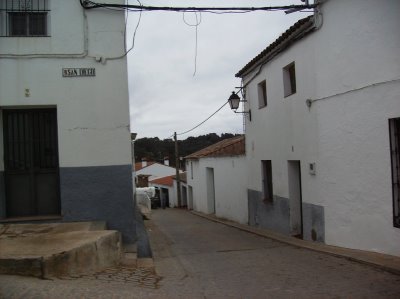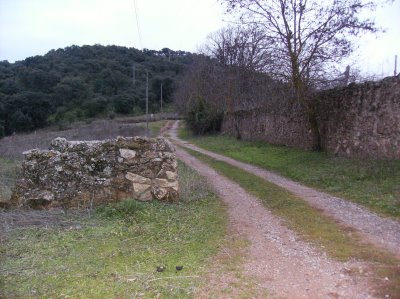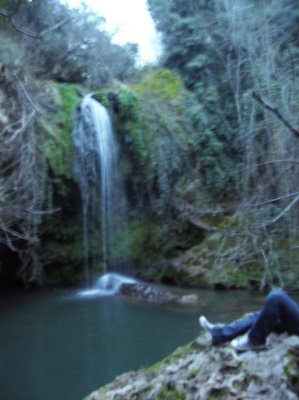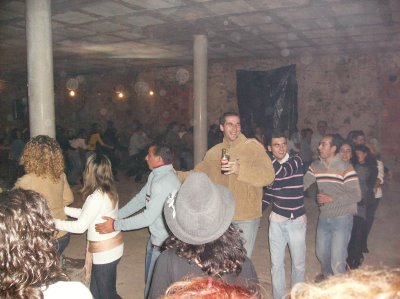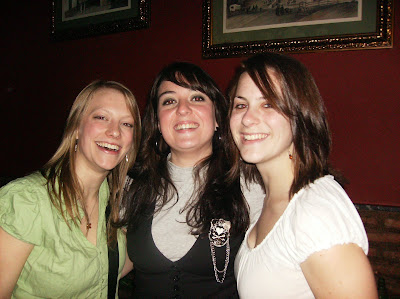“Diego, abrígate, que hace frío!”
Without a doubt the most overheard phrase in the small village of San Nicolás del Puerto. Diego, dress warmly; it’s cold.
In San Nicolás, San Diego reigns king over the pueblo of 700 farmers in the heart of the Sierra Norte de Sevilla hills. Amidst cork trees you’ll find his white-washed shrine, his photo framed above every living room couch as the family sits around the bracero keeping warm in the winter, and as the given name of the offspring of its citizens. My boyfriend’s great-great grandmother grew up in a house on Calle Hueznár, a house built before my town was founded, a house that lies on the street named for the very river that gives San Nicolás its name as a port, the river that flows through the family’s land and the tributary of the waterfalls that make the village a destination in the natural park.
I feel more and more of an affinity for the village and its people each time I go. Word spread quickly that El Bigote’s son was dating an American, so my pig cheek plate came with a side of a million questions from Murangaños who wanted to poke and prod the Americanita. Each time that first year of dating, I was introduced to a new rincón of the town – from Bar Higinio to Finca los Leones and its hermitage to the town’s patron to the camping with its exquisite migas. I’ve been there for many major holidays – the Romería, Reyes Magos and, most recently, El Día de San Diego.
From this little town came a devout and God-fearing Franciscan monk, a poor and humble man from a poor and humble town. After his burial in the 15th century in Alcalá de Henares (northwest of Madrid), miraculous things began to happen and a saint was born. A statue was erected in his honor in the plaza next to the Church of San Diego, built before Christopher Columbus was born, hordes of Diegos christened, and the equally devout eople of the village come to worship him once a year on November 13th.
My feeble attempt to sleep was made more difficult by the winding roads that snake from Lora del Río up through the Sierra Norte to Cazalla, Alanís and San Nicolás. After my usual siesta in Kike’s childhood bed, I took the main road in to its intersection with the main road out. There, sandwiched between the houses on Calle Diego, next to my favorite bar, was a charranga in full-swing and scores of small Diegos running around. The nearby owner of the camping, Diego (duh), welcomed me with a beer and I sang him the customary saint day song (Many children in Spain also receive gifts on the day the feast of the saint which bears their name is celebrated. San Enrique, for example, is July 13th. To my knowledge, there is no Saint Cat!), taught to me recently by my babies at school. The town was fuller than ever – Inma came from Córdoba to see her mother and ask that her son be baptised in the same church as she and other generations in her family had, and an old friend of Kike’s, María José, brought her small children and husband for the first time. The bailes, typically held on Saturday, were cut short due to the early morning parade to follow the next day.

